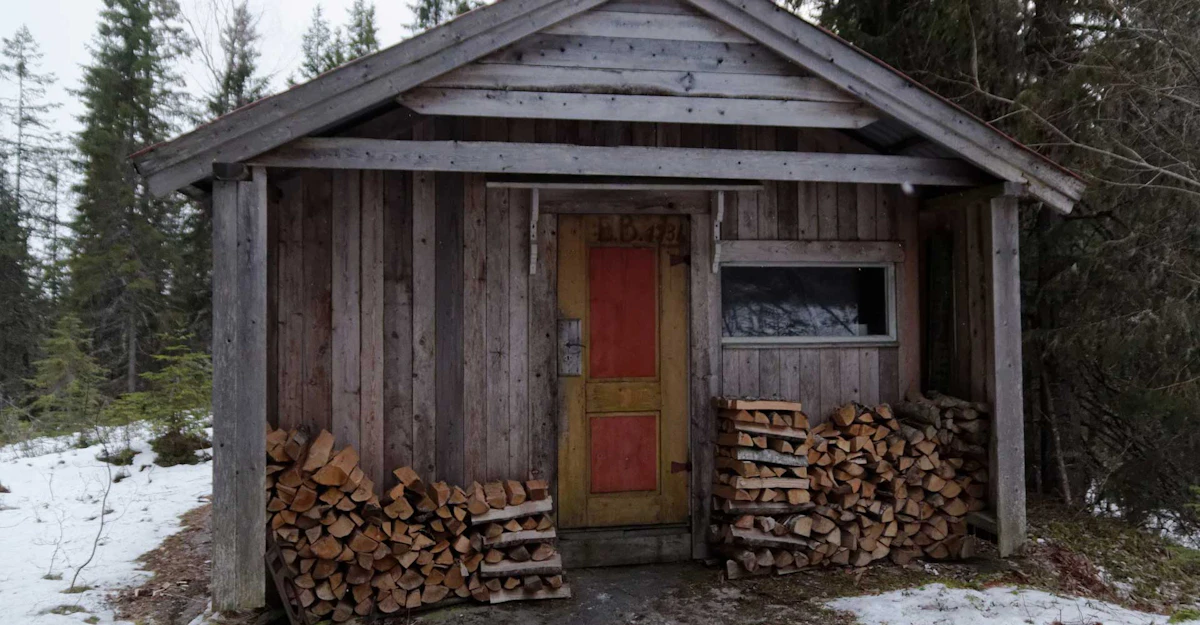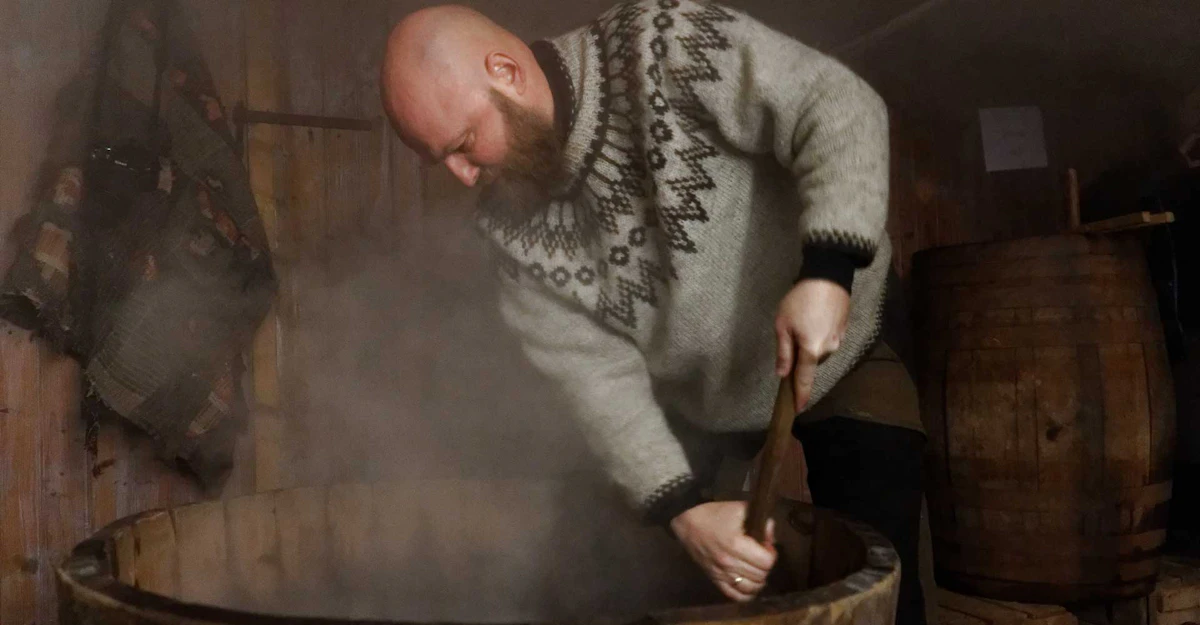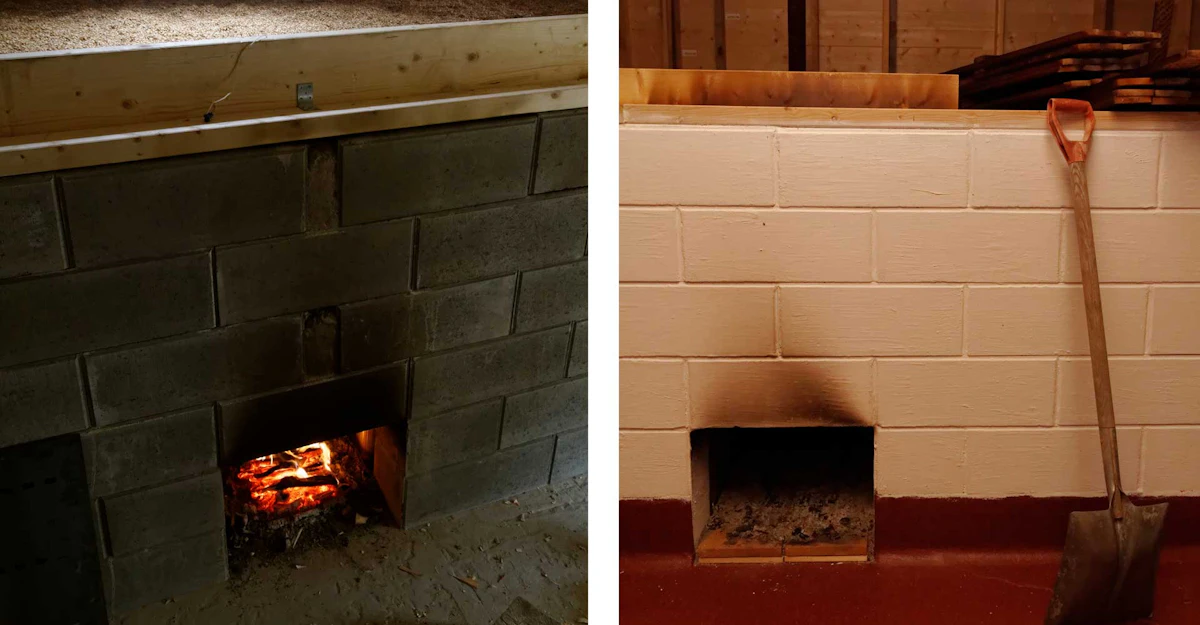People think of Bamberg, Germany, as the capital of smoked beer—however, if measured by the number brewers, there is a locality that massively outranks Bamberg, even if few beer lovers have heard of it.
That locality is the rural county of Stjørdal, in central Norway. The area boasts more than 400 brewers of smoked beer. That’s an indication of a strong tradition, even if only one of those brewers actually sells his own beer.
Back when the farmers brewed their own beer, they all used their own grain. That meant that as long as they had enough grain left over to eat, the beer was effectively free. The downside was that they had to malt their own grains, which they did in a number of different ways.
Tending to “the Woman”
In Norway there’s a short saying that describes the start of malting as a rule of thumb: “Three days in the brook, three days in the sack.” That is, you put the grain in a sack, then dump the sack in the nearest brook—which, in Norway, won’t be far. After three days of soaking, you take the sack out and put it in a warmish room. The water drains, and the grain starts sprouting. After three days, you spread the grain out somewhere and let it continue to sprout.
The final step is to stop the growing, which is done by drying, and farmers had a mind-numbing array of different methods for this. In Stjørdal everyone uses a type of kiln called a såinn. The modern version is essentially a box of masonry blocks, about chest high, and maybe two meters deep by four meters across. On top of the “box” is a drying surface of wooden boards perforated by thousands of drilled holes.
In the middle of the front of the såinn is a small opening to add firewood. Above that opening, there is a big sheet of slate held up by bricks or stones. That slate protects the wooden planks above while distributing heat from the fire below. This simple fireplace is known as the kjerringa—literally, “the woman.”
To dry the malt, the brewers spread it out fairly thinly on the planks, then they burn alderwood in the fireplace. The heat and smoke fill the box, then they rise through the holes in the planks, heating the green malt and suffusing it with smoke. It usually takes about two days for the malt to dry.
Exactly why the fireplace is called “the woman” is not clear—but the brewers themselves swear it is because you have to lie down beside it at night to stoke the fire.

Stjørdal’s Odd, Smoky Ale
Most beer enthusiasts have tried German rauchbier and maybe some modern smoked porters or stouts, and so they think they know smoked beer. However, stjørdalsøl, the smoked farmhouse ale of Stjørdal county, is a different beast.
Commercial breweries use commercial malts, produced under carefully controlled circumstances. That’s also reflected in the flavor of commercial beer, which is similarly controlled.
Stjørdalsøl is different. As a beer made from malt that has not been produced that way, its flavor can be shocking. The smokiness is intense: German rauchbier is mild in comparison.
Another difference is the quality of the smoke flavor itself. Rauchbier is smoked with beechwood, but in Stjørdal they use only alder. It has a distinctive, pungent profile, often with barnyard-like notes and other surprising flavors. On top of that, the malting process itself can impart unexpected flavors that you don’t find in commercial malts.
When tasting a new stjørdalsøl, you never really know what you’re going to get. Some are amazingly smooth, with expertly crafted smoke profiles that start mild then fade out perfectly. Others are riots of smoky madness that send carnival processions of barnyard, vanilla fudge, male sweat, lingonberries, and butter through your mouth. Of course, you can get anything between these extremes.

Communities of the Kiln
People in Stjørdal still make their own malt for two main reasons. The first, and most obvious, is that if they didn’t do it this way, the beer would be totally different. You simply can’t buy this type of malt.
The second is a Norwegian law adopted in 1912, during the run-up to alcohol prohibition, which forbade homebrewing except from homemade malt. That prevented homebrewing from taking off in the towns—but it did little to discourage farmers who had always malted their own grain anyway.
This type of malting requires a separate building for the såinn because everything reeks of smoke and there is risk of fire. Of course, maintaining a separate building just for malting once a year didn’t appeal to everyone, so over the years most people stopped malting. By the 1970s and ’80s, a few people in Stjørdal were making malt and selling it illegally to the people who brewed.
Then, in the 1980s, a group of brewers got together and formed an association to cooperatively own a kiln building. This meant that maybe 10 people could share the cost, upkeep, and use of the building. Plus, they inevitably ended up having social gatherings, too. The idea spread, and today there are 44 kiln clubs—såinn co-ops, basically—in Stjørdal, each with an average of 10 members. Some people also buy malt, so the total number of stjørdalsøl brewers is well above 400.

The Methods of Stjørdalsøl
Many of the brewers use only their own smoked malt, but some also buy and use a portion of commercial pale malt. Traditionally, they also used both hops and juniper branches. However, some Stjørdal brewers have started omitting one or both of those to put the emphasis more firmly on the malt.
The brewing process varies somewhat, but the most common way is to stir a little cold water into the malts the evening before brewing and leave it overnight. This serves as an acid rest, lowering the pH, and it makes mashing the next day more efficient. It has historically been common practice in parts of Norway.
The next day the brewer adds a juniper infusion—or just cold water—to the mash, then runs it off, heats it in the kettle, and pours it back into the lauter tun. This recirculation continues until the mash gradually reaches 158–176°F (70–80°C). This method is well-suited to getting the most out of the homemade malts, which typically are poorly modified and less efficient than commercial malt. Furthermore, Norwegian barley varieties have been bred for agriculture, not for brewing; malting was never a big industry in Norway. The weaker sunlight up north also hinders the grain’s suitability for malting.
Once the wort is lautered and ready, some brewers boil it, but most don’t. With most types of beer, whether the beer is boiled or unboiled would cause very noticeable differences in taste. However, stjørdalsøl is so dominated by smoky character that the difference is not that significant. If anything, perhaps the malt flavor manifests a bit more clearly in the raw ales.
Many brewers add sugar or syrup, seeing it as a way to increase the strength without further intensifying the smoke aroma—or as a way to dial down the smoke just a bit.
For fermentation, most of the brewers use a Norwegian type of baking yeast from the supermarket, and it works remarkably well. That yeast behaves like farmhouse yeast, with high temperature tolerance and fast fermentation.
Stjørdal used to have its own farmhouse yeast, but it seems to have died out in the 1980s. Despite extensive searches in old barns and outbuildings, nobody has yet succeeded in finding any surviving yeast.
The brewers in Stjørdal place most of the emphasis on the malting. They say that “if you have good malts, you can hardly fail to have good beer.” It’s a clear indication of which part of the process they consider the most challenging.
Finding stjørdalsøl is not the easiest thing to do. At the Norwegian farmhouse ale festival (Norsk Kornølfestival) you can usually try a few variants. There are basically just two on sale commercially: Klostergården Alstadberger (clean, subdued, magnificent) and Stolt Røyklagt (darker, heavier). You could also visit the Granås farm in Stjørdal, and if Morten Granås is home and has beer, he will sell it to you legally. His is a classic, rustic stjørdalsøl, a majestic creation that is simultaneously rough and refined.
However, if you really want to try a large number of authentic samples, there’s only one way: Go to central Stjørdal, then walk about 20 minutes out of town, into the forest, and up into the hills. There, at a forest cabin, about 30 to 40 brewers will turn up once a year and share samples of their beer for free with each other and anyone who turns up.
The catch? It happens only on December 26.
